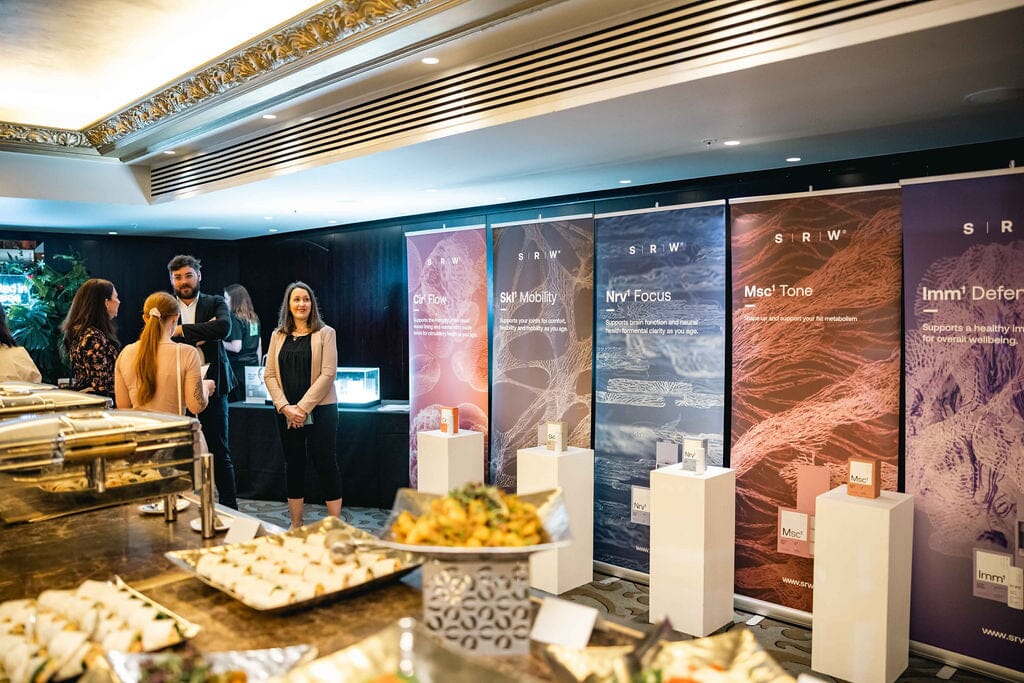
Founder of SRW Laboratories, Greg Macpherson has been featured in the Longevity Issue "Never Grow Old" of the Nutrition Business Journal (NBJ). NBJ is the go-to source for reporting, product trends and in-depth data and analysis in the nutrition industry.
“The evolution of what consumers understand to be healthy aging has moved from simple diet and exercise to interventions based on our understanding that there are longevity ‘circuits’ or pathways that can be activated at a cellular level with simple changes to our lifestyle,” says Greg Macpherson, founder at SRW Laboratories.
“This change in awareness, that we can modify our aging trajectory, coincided with the advent of aging clocks that enabled measurement of biological age—the age that our cells are acting—and gave researchers a way to validate the various interventions that have a meaningful impact on the aging process.”
The Evolution of Aging
Ask the market leaders, and this ability to test and measure is a bigger and bigger piece of the supplement equation going forward... At the same time, experts are beginning to connect the dots between the health conditions that come with age and using a slowing or reversal in aging as a doorway into dealing with these conditions.
“It’s an exciting shift in thinking that is leading towards prevention as a primary strategy for healthy aging,” says Macpherson.
What’s in a Name?
Whether or not “longevity” is a better label than “healthy aging,” one important takeaway is that longevity opens its arms a bit wider to younger demographics who aren’t ready to accept their loss of youth. Research from NBJ proves this point, as longevity as a term works best through ancillary categories that already target prevention and optimization through known consumer needs. Think beauty-from-within or brain health. Think eye health focused on blue-light strain... It isn’t enough to simply live longer.
Market Players
NBJ research into longevity as an emerging market for supplementation reveals a range of market movers... with products targeting aging in novel ways, to tech platforms... that focus their content and personalization engines on longevity. SRW, in particular, positions aging central to its core, with Macpherson writing a book about the nine hallmarks of aging, including scientific research that includes mitochondrial dysfunction, telomere attrition, and cellular senescence, among others.

Ingredients to watch
According to NBJ data, CoQ10 remains the big winner for a strictly defined “healthy aging” category with 24% of sales in 2021, followed by meaningful results for DHEA, vitamins A and D, resveratrol, and combination herbs. For the emerging class of ingredients shaping this market in the years to come, here’s the expert opinion. Ingredients targeting NAD+ and NAD+ pathways... The opportunity for many of these phytonutrients is to improve bioavailability and/or delivery to drive efficacy and compliance.
“I’m very interested in fisetin, withaferin A, and berberine,” says Macpherson. “These are molecules that researchers are spending a significant amount of attention on and appear to have an ability to support longevity.” Fisetin is a natural senolytic, he says, referring to compounds that support the removal of senescent cells—also known as ‘zombie cells’—that accumulate with age and are a key contributor of inflammation. Withaferin A is an isolate of ashwagandha and berberine that acts to inhibit the primary aging pathway mTOR, says Macpherson, “and berberine activates AMPK and interacts with mTOR... Hobamine, also known as 2-HOBA, as one to watch. (Both SRW and Big Bold Health feature Hobamine in foundational products.) “I truly believe Hobamine should be looked at as a new daily essential,” he says. “We are very excited to see it reach its full potential, as I believe it will help so many people to maximize longevity as well as the quality-of-life aspect. I do think that aging is a key position for us.”
Of Technology and Personalization
As longevity makes its play as the driving force behind an aging market that moves through boomers into younger demographics, many of the themes explored in this article gain momentum. Personalization, data sets driving smarter clocks and research are the levers that leading brands in the space are beginning to pull. Of particular note, NBJ reports that personalization sales reached $519 million in 2021 on a whopping +35.8% annual growth, and estimates carry that to more than $1 billion in 2024.
The clocks concept cannot be overlooked. The future of longevity depends on them, doctors are using and promoting them, and the pace of research is rapid. “The role of DNA epigenetic testing to measure biological age is going to expand substantially over the next few years,” says Macpherson. “The third-generation clocks are linking our biological age to downstream risks of developing health conditions which, up until now, has been the missing piece of the puzzle. Just like practitioners use HbA1c as a leading indicator on how well we are managing our blood sugar, they will increasingly use DNA epigenetic testing as a leading indicator on how well we are aging.”
Republished from Nutrition Business Journal - "Never Grow Old" Longevity Issue. Read the full article here

![Never Grow Old - Longevity Issue [Nutrition Business Journal]](http://scienceresearchwellness.com/cdn/shop/articles/NBJ_Post_-_LinkedIn.jpg?v=1692742979&width=3000)
![Never Grow Old - Longevity Issue [Nutrition Business Journal]](http://scienceresearchwellness.com/cdn/shop/articles/NBJ_Post_-_LinkedIn.jpg?v=1692742979&width=1500)
![Circulatory system care "vital" [NZHERALD]](http://scienceresearchwellness.com/cdn/shop/articles/SRW_-_News_Clip_-_Post_-_Cir1_-_D1_dfadc7dc-c57a-4f80-82bd-4fdb5ba5f0cd.jpg?v=1692742734&width=1500)
